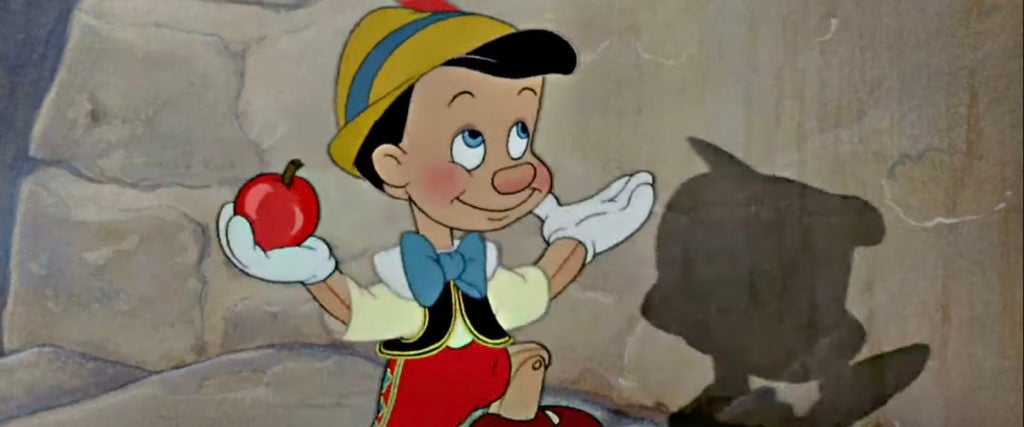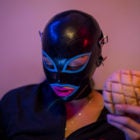It feels like with every other film release over the past several years, Disney has made a big show of announcing it has a new LGBTQ character. Each time, though, it’s usually some minor character with three lines making a comment about their same-gender partner, like the unnamed character that appears for 30 seconds in Avengers: Endgame. To be clear, I don’t actually think Disney putting more people of color or queer characters in their stories is something we should want. I’ve written about my distaste for the representation arms race before, and I remain resolute that it’s a useless gesture from a company more concerned with the optics of being progressive than making a meaningful change.
Having said that, I find it odd that Disney is retconning their own history. After all, the first gay Disney character came out in 1940 in the company’s second-ever movie, which starred an androgynous icon whose story speaks more to the experience of queer people than any princess or lesbian cyclops cop ever could. I speak, of course, about Pinocchio.
Based on a 19th century Italian children’s book, Pinocchio tells the story of a marionette brought to life by the Blue Fairy to fulfill the wish of an old woodworker named Gepetto who longs for a son. Seconds after Pinocchio is incarnated as a waifish, mostly hairless being, the Blue Fairy informs him that he’s not a real boy and will have to earn the right to boyhood by proving himself worthy of such a distinction. From his very conception, then, Pinocchio exists outside of traditional gender. A magical twink made of pine, he’s born not-yet-a-boy, and simply has gender roles thrust upon him rather than choosing them for himself.
The Fairy then assigns Jiminy Cricket (who is literally just some cricket with zero qualifying credentials) to serve as the wooden gay’s conscience. Except, Jiminy Cricket is a terrible conscience. He mentors Pinocchio in a school of Christian morals, espousing “the straight and narrow path” and insisting he avoid temptations while being completely unable to explain why his urges are bad. Seems pretty homophobic to me. Similarly, Gepetto, though overjoyed to have the company of a child, spends no time advising his newborn wooden homunculus on gender or what it means to be a boy, instead sending him away to school the next morning to let someone else do it.
As you would imagine, Pinocchio quickly ventures away from doing what he’s told. A walking, talking fox named Honest John and his cat sidekick trick Pinocchio into skipping school and becoming an actor in the puppeteer Stromboli’s show, and though it’s inevitably a trap in which he’s sold to the vicious puppeteer, our wooden boi clearly loves the performing arts. And while Jiminy gives Pinocchio one piece of solid advice by telling him not to be a theater kid, he has no idea about the villains at play — he simply insists to the small Italian automaton that it’s wrong to follow his passions.
Upon escaping from Stromboli’s clutches with the help of the Blue Fairy, the puppet child is again led astray by Honest John, this time taking him and a bunch of other “stupid little boys” to the mysterious Pleasure Island, a bacchanalian amusement park where the lads are left to their own devices encouraged to eat, drink, fight and smoke to their heart’s content. Pinocchio once again proves himself to be drawn to a life of queer decadence, spending all his time roughhousing with other boys and venturing further and further from the supposedly moral path. To be fair, the real boys of Pinocchio’s world don’t seem to be all that virtuous either, gleefully destroying many parts of the island and engaging their vices heartily in what is a pretty clear 1940s view of homosexual degeneracy.
From there, the morality tale gets even more bizarre with all the boys on Pleasure Island being turned into donkeys, Pinocchio getting eaten by a whale and eventually proving himself brave and deserving of boyhood by drowning (let that sink in — to prove his masculinity, he has to die). In the end, he does become a real boy, but the backwards nature of this story begs the question of what’s so good about being a real boy in the first place. I mean, as a magical Italian twink born free of gendered socialization and able to engage his desires in earnest before others sully his spark, Pinocchio is kind of living the dream.
As one of the earliest Disney characters, Pinocchio embodied the traits of so many of the Disney princesses that followed that it could be argued he was one of the first Disney princesses himself. He’s certainly the only one I’d bow to, at least.

